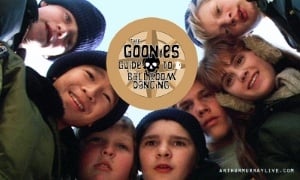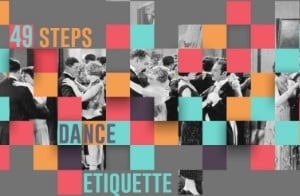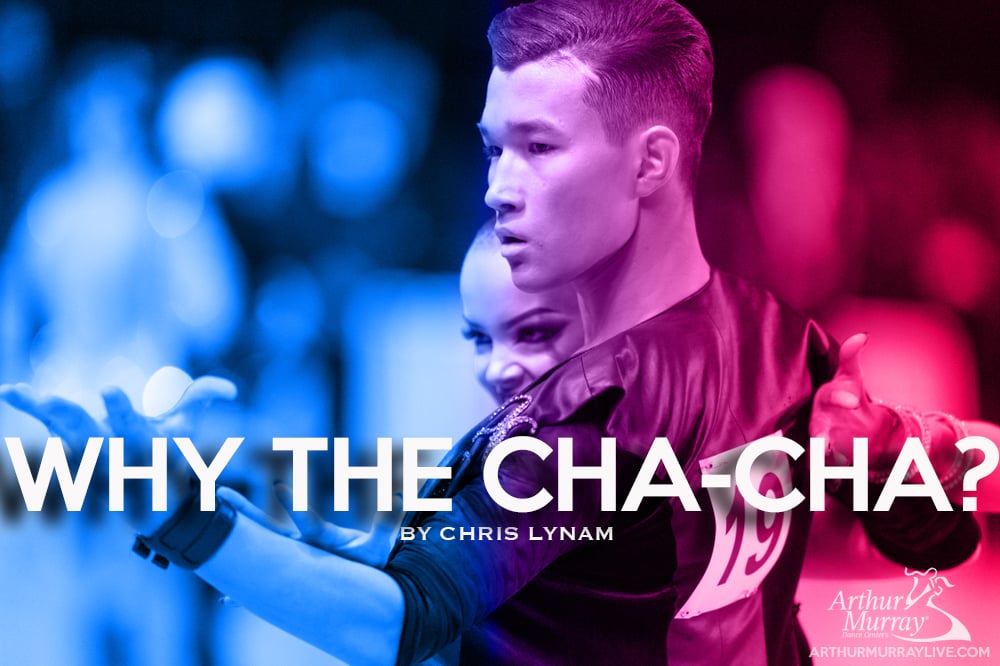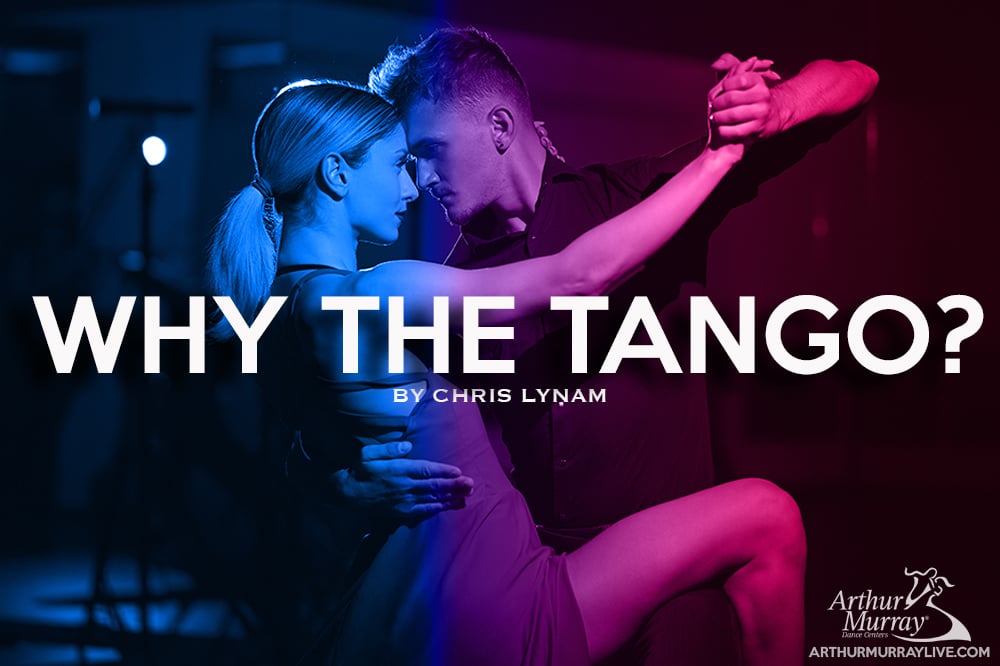 Tango Dancing at a Milonga: 10 Things Before You Go
Tango Dancing at a Milonga: 10 Things Before You Go
You've been taking a whole bunch of Argentine Tango lessons, and you're feeling great.
You're confident about the moves, feeling the music, able to lead/follow all the teachers in your studio, and the students who are into this passion with you. So here you are, in your natural state of Argentine Tango dancing, ready to go out to a social Tango event, "Milonga."
What can go wrong?
Well... absolutely everything can go wrong.
Unless you read, memorize, and abide by these ten straightforward guidelines for going to a Milonga. If you follow them, you will be accepted, invited more often, and you might actually have an amazing time.
These instructions are of the utmost importance in the Tango culture. So please, pay close attention.
1. How to Dress
You are still home and are trying to pick that outfit that says, "I'm a tango dancer, " but that does not say "it's my first time and I'm trying hard to impress."
Leaders:
Milongas are semi-formal events. So, there are no jeans allowed.
Let's have a clean and elegant look that makes you look like an attractive potential partner but does not look like you stood in front of the mirror for two hours picking out just the right color combination.
So here's the action plan: Dark colored dress pants, a blazer (it's okay if it's not a perfect match to the pants - might be even better), and a light colored dress shirt tucked into the pants. No tie. Especially, not a fancy colored one. This will just scream that you tried too hard. We don't want that.
Additional Fashion Note:
It is imperative that you choose a light colored dress shirt vs. a dark colored one. Milongas get very hot and steamy. Everybody sweats. If you are one of those lucky people who doesn't sweat, trust me - you will sweat at a Milonga. There's no escaping that, so keep the blazer on and when the heat will becomes pretty unbearable, you can take off the jacket.
If you wear a light colored shirt, the sweat won't show as much as on a dark colored shirt. Most importantly, say if you wear a black shirt, you will sweat, and then the sweat will dry, and I think all of us dancers know exactly what those white lines look like.
Followers:
No pants. Pants will make you look like you are rebelling against the culture. The Tango culture is a very old-fashioned one where men look like men and women look like women.
Let's assume you found that perfect skirt or dress for the occasion. It's elegant, comfortable for dancing, and can breathe. What should be the length?
If you go higher than your knees, then you're sending out the wrong message to the leaders. You are telling them that you are not there merely to dance but to get that other benefit that dance can offer. If that is, in fact, your mission then surely, let's go with the short and tight approach. But that is not the topic of this article.
We want to blend into the culture on your very first visit. Just a tad lower than the knee is the safest length to go with. This will display that you are there to enjoy the dancing and that you are also aware that the Tango dance is all about the feet of the woman.
So, you are leaving the feet (in beautiful Tango shoes, I hope) and the shins exposed for the viewers.
2. How to Get Invited
You found the courage to go to a Milonga! Congratulations.
It's the equivalent to when you stepped into the dance studio for your very first lesson. It's a big deal. You're done with the toughest part. Now, you probably want to get invited to dance.
Being a follower or a leader at a Milonga, you will get asked in the same manner. That manner is called the "Cabaceo" - eye contact with a slight nod of the head.
You will not be approached, and you will not be verbally asked to dance. So please, don't wait for that.
What to do? Simply look around.
The Plan:
Sit in the midst of people, in a well-lighted area, preferably, where you are facing and can see the eyes of potential leaders or followers.
Either be part of a bigger group or sit on your own. If you do decide to sit on your own, check your facial expression. Very often, when we are not engaged in a conversation, we assume a severe facial expression, which to the passer-by may appear upset, disinterested, or bored. Try to keep a light smile and nod your head gently to the music so that it looks like you are enthusiastic to get up and dance.
Careful! Do not appear overly enthusiastic as this may come across as being desperate - and nobody wants to invite a desperate dancer. You might be feeling desperate inside but for a successful experience, ensure to hide it properly.
Note:
Sitting at the edge of the dance floor where all you can see are the people dancing past you may help you pick up some cool new moves, but it will not get you invited. Sitting with just one person who happens to be your bestie from the dance studio and chatting with him or her all night long will also not get you invited. The potential leaders or followers will not want to intrude on the engaged duo.
3. The Right Time to Say 'Thank You'
You've been invited! Congratulations. Great start to the night. Now, let's not mess it up.
Here's another important term fo you: "Tanda."
A Tanda is a set of 3-4 dances in a row. Tango is such a close and intimate dance. Imagine dancing with someone you've never danced with at such close proximity. You don't know their level, their energy, their speed, nothing. It's all brand new nd you're right up and against their face from the very start of the song. Most likely, the first song you will dance together will not feel magical.
This is why etiquette in Tango is to dance a full Tanda with the same person.
This way, you have 3-4 dances to adjust to the new feel and to start enjoying the newly found connection. This is the equivalent of your dance teacher telling you to do as many entries at Dance-O-Ramas and Showcases. It will simply not be the best experience if you do not dance enough times. You need time to warm up, build up confidence, and just loosen up.
Same principle.
So here you are, got invited, and danced your very first dance with a perfect stranger. The song finished and the two of you are standing in front of each other awkwardly waiting for the next song.
Do not say "thank you, thank you." This means: "thank you very much for the dance, I do not wish to dance with you anymore." Thank you, presented in the middle of a Tanda, also means "I am completely new here and I don't know anything about the Tango culture."
We do not want to be exposed in that way.
So here's the simple guideline: You can say "Thank you" only, and I repeat, only at the end of a Tanda. Wondering what you are allowed to say between dances? See Tip #4 below.
4. Small Talk Between Dances:
Please, don't talk about dancing.
In between the dances, if you ask too many questions about Tango etiquette or your partner's experience in Tango, you will be instantly revealed as a first timer. So what do you talk about, you might wonder? Unrelated topics from dance.
Here are some examples:
- Chit Chat: Crazy weather today.
- Company: Who are you here with?
- Outfit: What a beautiful outfit you're wearing.
- Location: Where are you from?
- Occupation: What do you do?
Anything you can think of that is not dance related is good. You want to appear as if you go to these things all the time and boring dance talk does not entice you anymore.
5. How to Invite Someone for a Dance
You danced your first Tanda, congratulations. The future is looking bright.
Now you are back in your seat, and you've noticed a very musical and fun leader or follower who you really wish to dance with.
Note: Do not go over to them and verbally ask them to dance. We went over this before, but it is imperative to keep this reminder.
So there's that wonderful dancer sitting across the room.
There's no way that he or she can catch your eye contact from that distance. What do you do? Give up? Ask verbally?
Of course not. Simply relocate.
The Plan:
Go to a seat that faces your potential partner. There should be about a table or two in between you. If you sit at the very same table, this might be thought as being too desperate. We don't want that.
Now, for the art of Cabaceo. Look at them, but don't stare. Look at them for five seconds at a time and then look away. But after you look away, go back to them in 2-3 seconds (you can even keep a stopwatch handy). Do not be afraid to keep looking back at them a few times. You can keep doing this for the duration of an entire song.
Next, try to sense how involved they are in their conversation with their neighbors. If their body is leaning forward and their gestures are very active with a lot of facial expressions, it could be that at this moment, they are very engaged in their conversation and might not want to dance. If you notice this, it might be a good idea to invite them to a different Tanda.
Also, be aware that while you have fixated on inviting this one person, someone else might be trying to invite you. So in the 2-3 seconds that you are looking away, scan around the entire room to see if anyone is sending you a cabaceo.
With this being your very first Milonga, it's advisable to try to dance as many times as possible, so try not to miss out on those invitations.
6. How Many Different Dance Are There?
Listen to the music when you are inviting someone or when someone is asking you. There are three different dance styles that play at most Milongas. Here's a simple way to differentiate them - I've related them to their parallel smooth dances.
- Tango - The Tango
- Vals - The Viennese Waltz (3/4 Time signature)
- Milonga - The Peabody (and yes, the name of the social event and the dance is the same)The Tango is the dance that everybody starts with and the tune that everyone recognizes. So this is your safe zone. It's also very convenient that the majority of the songs played in Milongas are Tangos.
This is what the order of the Tango music generally looks like
- Tango Tanda x3
- Vals Tanda
- Tango Tanda x3
- Milonga Tanda
- Repeat
So, if you only know how to dance the Tango, you can still have an amazing time because the majority of the dances will be Tango. But don't invite or get invited when it is not a Tango.
Remember, you don't want to expose yourself. Specifically, Vals has a similar speed to the Viennese Waltz, and the Milonga has a similar speed and characteristics to Peabody (a little bouncy). If you are uncertain which kind of song is playing, do not ask anybody.
The safest thing to do will be to get a drink or engage in a conversation with a newly found friend. It will emit the look of, "I am way too engaged in this conversation to dance."
Leaning forward, active hand gestures, plenty of facial expressions, and you'll be safe.
7. How to Reject a Dance Invitation
Your very first rejection. Congratulations, we've come a long way.
You are having a good time. You've been following the rules. You got invited, and you courageously invited someone. You already danced three entire Tandas, and the night is still young. You've engaged in a few stimulating conversations, made a friend, you're getting an A+ from me so far.
You've danced so much, actually, that you are a bit tired and you feel like you need a tiny break.
Suddenly, you see it: A cabaceo.
There's your potential partner standing just a few feet away from your table, looking at you, smiling (and doing everything listed on #5). Your eyes meet. Do not panic. You really feel that you are too tired to dance at this time. You want to reject this invitation.
There's a very simple way out of this.
Simply look away.
Do not shake your head. Do not shrug your shoulders. Do not mouth the words, "no, not now."
Nothing of the kind.
The only thing you need to do is simply look away. Trust me; it's that simple. Don't feel bad about it.
8. Did You Just Get Rejected? It's Not You It's Me!
It will happen, I promise.
There will be times when you'll be over the moon after an amazing Tanda with someone. There will be times when you've shut someone down, and you have conflicting feelings, and finally, the lowest of all, when you will be rejected.
It happens to everyone.
You will be attempting to send out a cabaceo to someone, they will catch your eye (or so you will think), they will look at you for a second or so, and then they will look away. At this moment, your heart will drop down to the lowest part of your stomach..., and it's okay.
It's all part of the roller coaster of experiences and emotions that comes with the Tango dance and with a Tango social event. It's just a part of the culture. So let's get back to what just happened - you just got rejected.
Here are some possible assumptions that will be running through your mind:
- I'm not worth it.
- I'm a bad dancer
- Nobody likes me.
- I'm such a fool.
- Nobody in this entire place likes me.
- It was a mistake coming here.
Basically, at this moment, all of the fantastic things you've experienced prior will feel like they are going down the drain. But here's the reality of what just happened:
Your potential partner did not catch your eye. You only thought he or she did. It is dark in Milongas, and the cabaceos are not always super clear You did, in fact, get rejected but not because it was you. Perhaps, your potential partner was tired, does not like the song that was playing, and is waiting for the Tanda to end to start dancing a brand new one. Maybe they just don't feel like dancing at that moment.
So, it could have nothing to do with you at all. Let's remember from the very first Milonga, never take rejections personally. Of course, it's easier said than done, but this is the reality, and when you're the one doing the denials, you will remember these words.
9. How to Try a New Partner
So you've already danced 10 Tandas! The night is going amazing. You are really an A+ student.
Your confidence is skyrocketing. Now, you've spotted someone new who just walked in, and you are very curious to see how it will feel to dance with him or her.
Note: Here's what can go wrong if you don't follow my instructions; you will start the Tanda with this new visitor and will instantly realize that there's no connection and no way out. You will have committed yourself to them for the next 15 minutes. Based on the prior rules mentioned, you remember that if you say "thank you" and sit down after the first dance you will be revealed as a first timer, and that will put you in a box that you don't want to be in.
So here's my secret plan for you.
It will require some calculations and extreme attentiveness, but I genuinely believe it's possible. Here it goes, the Tanda begins, you do nothing. The last dance starts, this is when you take action.
Use the cabaceo skills you've practiced to entice the new visitor to dance with you.
You succeed. Great work.
You two enjoy the last dance of the Tanda. There happens to be a great connection between you both and you wish to dance more with your new partner. Here's what you do. The Tanda ends, and you say, "That was a wonderful dance, would you like to stay for the next Tanda?"
But, very important, say this only if your new partner is standing in place after the dance. If he or she starts walking away from the dance floor, do not, and I repeat, do not use this technique as it will make you appear desperate.
10. When Do I Go Home?
You've followed all the rules and, naturally, had a fantastic night. So when do you leave?
Here's my trick to leaving just at the right moment so that you are in your highest emotional state. As you remember, your emotions will be fluctuating throughout the night.
There will be times when you will be down, it will be tempting to leave then, but do not give in to that temptation. Stick to the guidelines I've provided to you.
The Plan:
When you've just finished what must have been the best Tanda of the entire night, leave. Yes, you're flying high, with goosebumps all over, and you can't even believe what you've just experienced, but this is the moment to go home now.
Say goodbye to all your friends, hold onto the incredible feeling, and run home while it's still fresh.
Final Thought
Remember, you can have an unforgettable night at your very first Milonga if you follow these guidelines closely. This is why I recommend studying everything suggested very diligently.
Start preparing at least three months in advance.
This is all assuming that you are already a confident tango dancer. Ask your teacher to test you on Tango Etiquette Bronze 1. Simulate the different scenarios in your studio. Have fun with it, but stick to the provided guidelines.
Once your teacher tells you that this is all in your muscle memory, making all the right gestures, reactions, correct body language, positioning, conversation topics, and dressed properly; then, and only then will you be ready for your very first Milonga.
And don't forget to have a blast when you get there.
Take the next step in your Dance Hobby and become an Arthur Murray Live subscriber today!




























